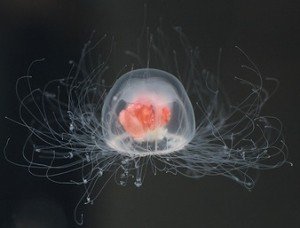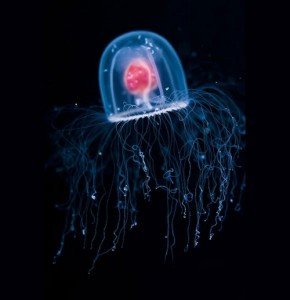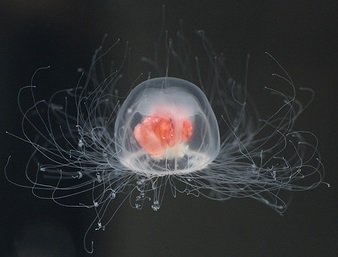
We know for certain two things, we live and then we die? In 1988, man discovered otherwise upon its discovery of the Immortal Jellyfish (Turritopsis Nutricula). Recently, the Immortal Jellyfish has been sprung into the limelight again by an article from the New York Times, in which they ask the question, Can a Jellyfish unlock the secret of immortality?
So what is it that makes the Turritopsis Nutricula immortal? And can it really show us the secret to our own immortality? Unfortunately, the New York Times does not go far in explaining this, for reason of that explanation not actually existing.
Cellular Rejuvenation is Possible
As is detailed in our website, there are many potential methods by which we can become immortal. The story of the Immortal Jellyfish potentially examples one of those methods – cellular rejuvenation. It is explained in the New York Times article that when the Immortal Jellyfish suffers environmental stress or a physical assault, a process of rejuvenation is initiated and it begins to ‘grow younger’. This though is where the excitement ends. Countless news articles have been written suggesting that this rejuvenation allows the jellyfish to live forever, and that through study we could unlock the secret to human immortality.
What is important to note is that the rejuvenation process seen in the Immortal Jellyfish involves its cells undergoing cellular transdifferentiation, where for example, its skin cells can transform into nerve cells. The Immortal Jellyfish continues to rejuvenate until it reaches its earliest form of life as a polyp, from where it once again begins to age as any other biological organism, once its environment can supports its life.
Not the immortality we would desire
So, immortality, rejuvenation, ‘growing younger’, is possible. In the endeavour to apply this ability to ourselves though, as of yet, very little progress has been made, none of which has been made thanks to the Immortal Jellyfish.
A problem with the process seen in the Turritopsis Nutricula is that the rejuvenation process doesn’t stop, it continues until the jellyfish is at its earliest form of life as a polyp. The immortality that we would desire is one that involves the age of our cells being paused, so we neither grow older or younger.
 Worse yet, the cells of the Turritopsis Nutricula do not only grow younger but also transdifferentiate, becoming something that they were not previously. The concern here is the retention of the human memories and consciousness during rejuvenation; our memories would be wiped during the process.
Worse yet, the cells of the Turritopsis Nutricula do not only grow younger but also transdifferentiate, becoming something that they were not previously. The concern here is the retention of the human memories and consciousness during rejuvenation; our memories would be wiped during the process.
While the Turritopsis Nutricula is rejuvenating, it is losing its form while on the journey to the door from which it entered the world, the door which leads to inexistence, death. Once its cells are completely rejuvenated and it is on the brink of death, it once again grows as a reset organism. Everything that it becomes upon growing is continually reset. This is not an immortality that anybody would desire.
Another point is the possibility that it is not actually ‘growing younger’, but is instead simply transforming into a polyp via the most efficient route, which would explain the bastardisation of its cells.
Also, if it resets its biology, how does it evolve? How does it learn to better survive in its environment? Perhaps it is now incapable of evolution and is only immortal because of a genetic fault; instead of acting to repair the damage of an injury, it instead triggers the release of chemicals which happen to reset its biology – not the desirable reaction to most injuries. This would explain why it has only been found to have spread around the world since it was first discovered in 1988; the genetic fault may have only occurred soon before it was discovered, and its populace is now aided by the parent Jellyfish not dying naturally.
Very little is left then that is desirable to acquire from the biology of the Turritophis Nutriculais. Scientists have already previously discovered how to reprogramme adult cells and guide them into once again becoming stem cells through the manual induction chemicals, without the help of the Turritophis Nutriculais.
Find more information about human immortality on our Immortality introduction page.

